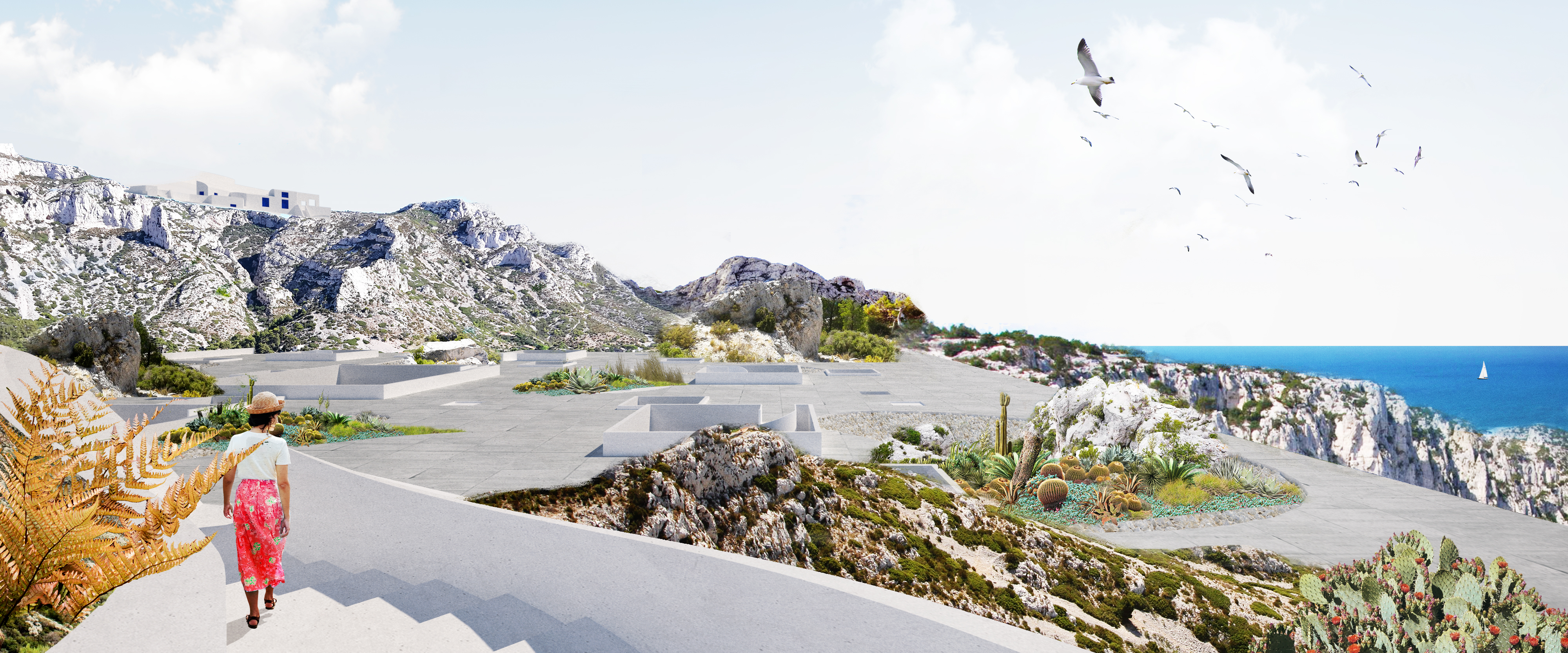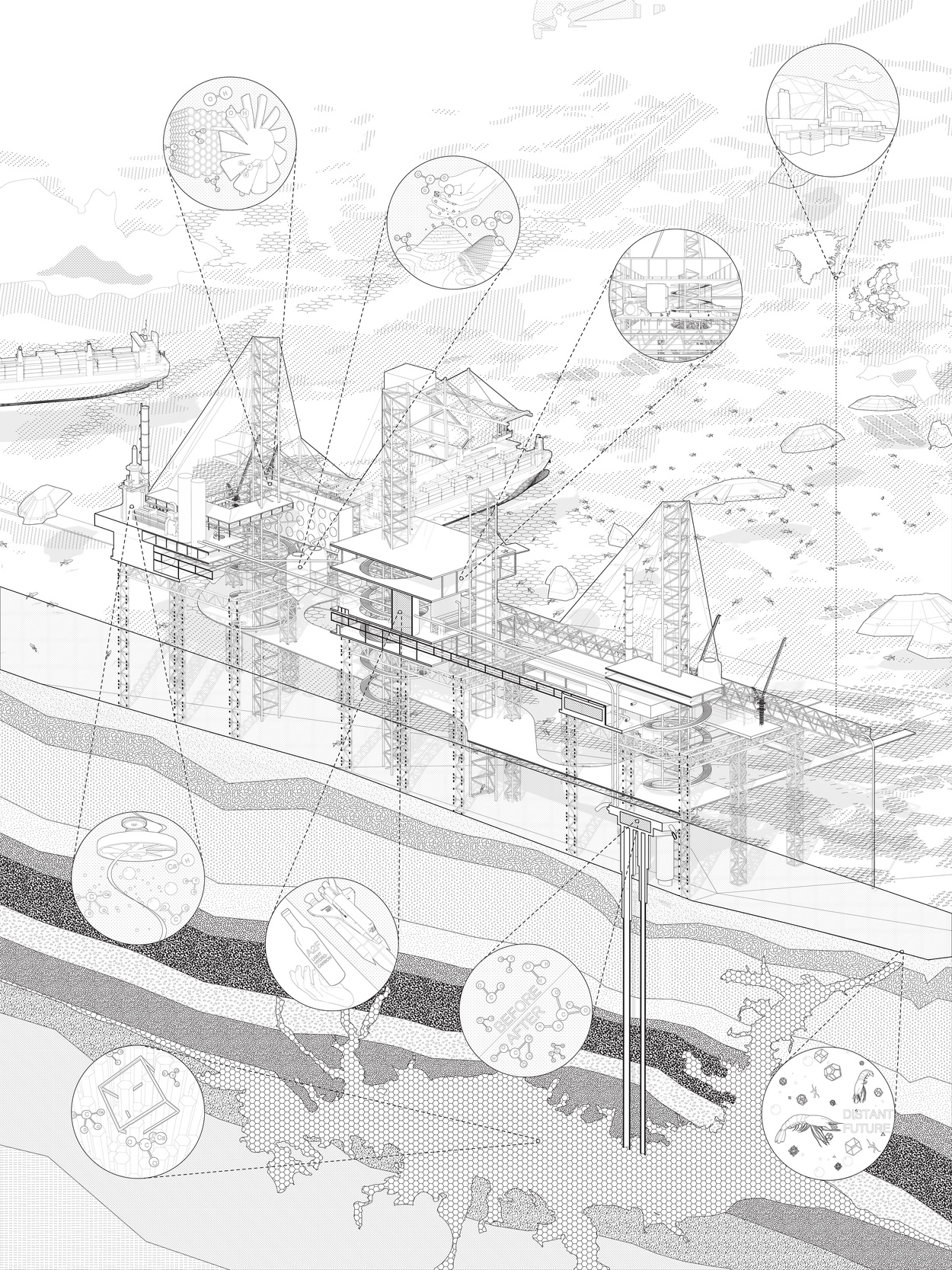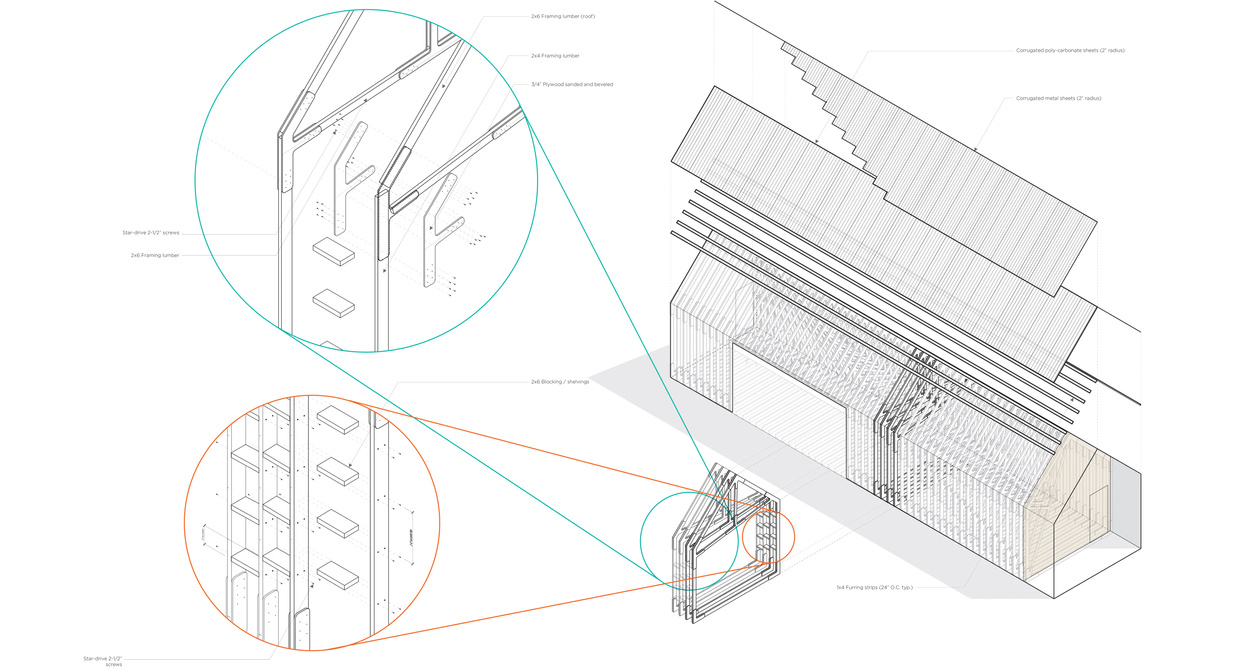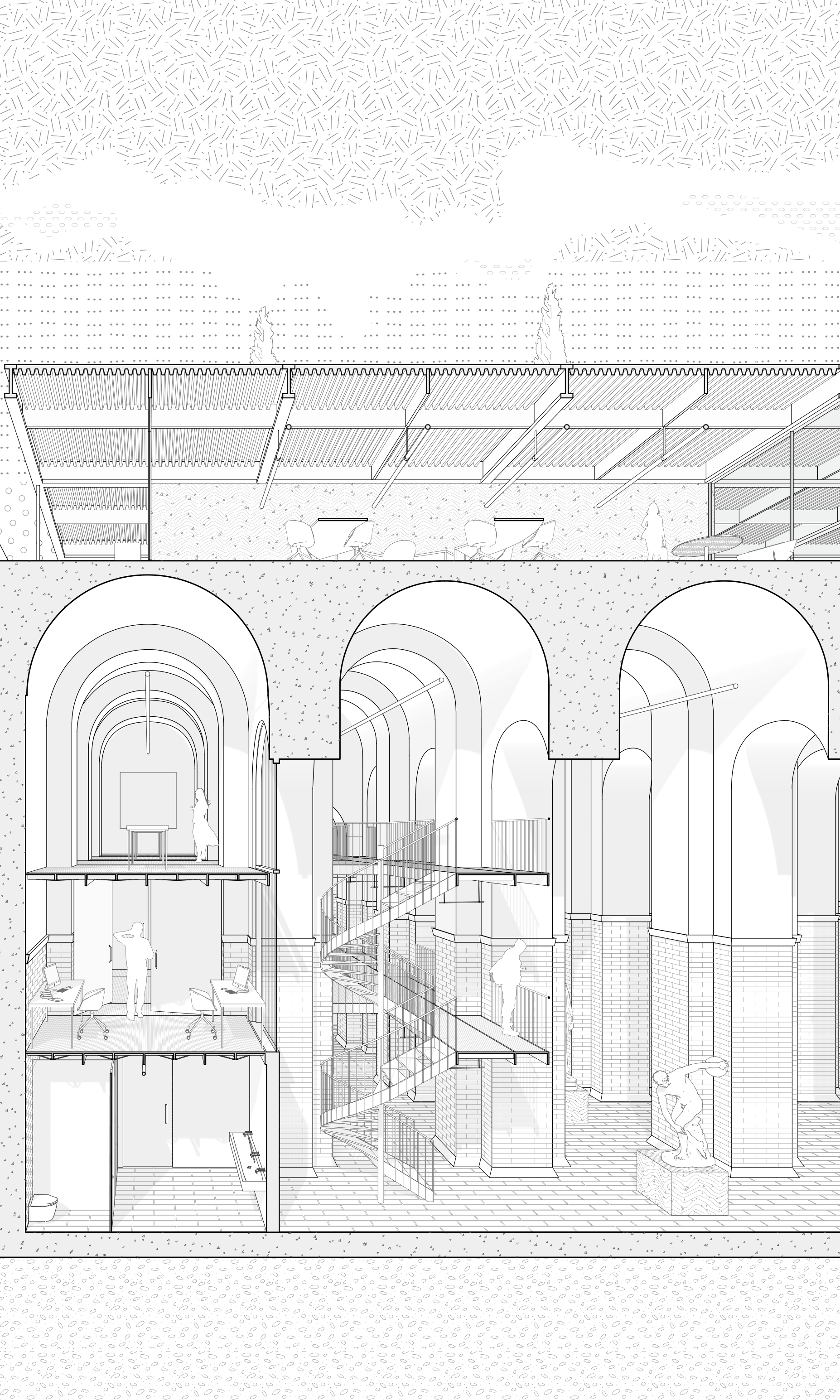Machinations of Power — An Analysis of the Teleology of the Système de la Méditerranée and Saint-Simonian
Praxis in the Establishment of Cultural Hegemony —
Fall 2016
Enlightenment-era thought gave rise to a series of successive, utopian movements that attempted to reconstruct social conventions and mores to benefit the whole of society and radically restructure prevailing, social orders; despite the Enlightenment proclivity for the “rational” and the empirical, some Enlightenment movements established themselves by their emphasis on the speculative, or even the hermetic. Among these movements was Saint-Simonianism, a deeply-influential, social movement that began in the 1830s under France’s July Monarchy. Throughout its history, Saint-Simonianism defined itself in a multitude of manners, starting out as a movement which oriented itself towards “policy-oriented social philosophy”1 and ending as a radical contingent of mystics and individuals focused on the occult aspects of their esoteric, religious practices. Regardless of what the Saint-Simonians were at any given time, their movement was characterized by and created in response to an interest in the transforming experience of space and time in the Enlightenment era. This interest often manifested itself in the form of theoretical schemes that attempted to transform European society and the Mediterranean world in utopian manners, and a concentration on the genre of social equity (e.g., racial, ethnic, national equality) common to Saint-Simonian thought is omnipresent. Nonetheless, despite the intrinsic teleology of these imagined, utopian schemes—that is to say, that they impose a system of egalitarian principles and shared benefits equally amongst all peoples—it becomes evident that within Saint-Simonian notions of utopia lies an extrinsic teleology that favors its creators and proponents. Despite the Saint-Simonian proclivity for proselytizing on the equity of all peoples, they were unfortunately incapable of separating their ideologies from their implicit cultural biases. There exists a clear thread of social evolution within Saint-Simonianism that legitimizes European dominance over the Mediterranean world, strips the Orient of its proper identity and places it in a position of relative subservience, and privileges the growing, French Empire; this conclusion can ultimately be averred from the examination of Saint-Simonian history and spatial schema.
As previously mentioned, what was common to the myriad phases of Saint-Simonianism was the prevailing interest in the transforming spatiotemporal environment present during the Enlightenment epoch, this concern divulges a fascination with a large-scale architecture of networks that would radically transform existing notions of public space. The movement’s origins were traced to a “genesis of an informational public sphere”2 where “information, ideas, and opinion had begun to project materially far beyond their place of origin, making them simultaneously and equally present in many places at once.”3 Indeed, French society, spatiotemporally altered by a series of successive, technological innovations (such as the railroad, steamboat, and telegraph) was radically transformed into “a new kind of social collectivity, unbound by spatial proximity or by a common experience of time.”4 These innovations, along with the expansion of the financial sector, caused previously unquestioned layers of space and time to delaminate; separated aspects of daily life such as politics, culture, industry, now “sensibly involved the individual in spatiotemporal frameworks that were constituted by forms of disembodied communication and were not susceptible to phenomenal experience.”5 This reframing of space and time, combined with the Saint-Simonian predilection for (and emphasis on) technology and industry as methods of bettering society and the public sphere, contextualized the almost visionary schemes of the Saint-Simonians in the realms of architecture and planning. The disassociation of the Saint-Simonians from an architectural culture familiar to them and the fragmented, spatiotemporal qualities of their contemporary society catalyzed their thought-provoking, architectural schemes that created novel visions of utopia in a fast-changing Europe—visions that longed for a Europe that was cosmopolitan and equally benefited its constituents, regardless of race, nation, or creed. These visions ultimately did not look too far.
Among the various, utopian, architectural and spatial ideas and theories proposed by adherents of Saint-Simonianism was the Système Méditerranée, a hypothetical system of networks of capital that stretched across Europe, creating a vast, economic zone that stretched from Paris to Cairo. Though never realized due to contemporary political and technological restrictions, the scheme is remarkable for its incredible foresight in predicting the rise of a holistically European zone of trade and shared capital. Proposed by Michel Chevalier, a major advocate of Saint-Simonian thought, the Système Méditerranée was envisioned as a theoretical series of networks throughout the Mediterranean world as way of creating a union between Europe and the Arab World. The beginning text of Chevalier’s Système de la Méditerranée begins by polemically critiquing the notion that France was positioned to emancipate Europe by military force, instead, prosperity was more inclined to rise from the expansion of an industrial economy. Additionally, the “goals of international brotherhood, of the end of aristocracy and repression, and of perpetual peace between nations would instead have to be founded on an association between ‘the Orient and the Occident’—a theme that was then emerging as a central one in Saint-Simonian thought.”6 It is especially important to note that “Chevalier did not describe an institutional or political arrangement for the Mediterranean union; rather, he focused on the economic (or ‘industrial’, as he termed it) framework, whereby all the centers of production participated in a vast web of transport communications infrastructure, and a network of banks and shared pool of financial capital.”7 It was his hope that, with the use of contemporary technology (primarily the burgeoning system of railways) and European financial institutions, the scheme would ultimately be able to wither down the historical division between the East and the West and establish a utopian, pacified society based on the equal and fair distribution of capital. The Saint-Simonian emphasis on technology and scientific achievement as a method of progressing the whole of society is particularly evident within the system as it emphasizes the role of railways in acting as a primary (albeit, through ulterior motives) method in the pacification of society—by reducing the dimensions of space and time, Chevalier ultimately posits that the Mediterranean populace would both physically and figuratively exist closer to one another. Indeed, what “captured Chevalier’s imagination was how speed had the direct effect of contracting space, and it was thus that his Mediterranean System would ultimately evolve into a single, vast Mediterranean union.”8 Chevalier’s interest in establishing different networks of capital and transport between cities around the Mediterranean and throughout Europe demonstrates an interest in establishing a system of architecture that, rather than focusing on individual, embodied spaces, exists within the realm of massive, utopian, infrastructural projects and a redefinition of public, social space. The scheme ultimately preceded the socialist theories of Marx and Engels and is solidified the contemporary notion of Saint-Simonianism acting as a branch of social utopianism in the Enlightenment era. Nonetheless, despite all its proselytizing on the unification of a singular and holistic Mediterranean coalition, the Système Méditerranée does not exist as a wholly neutral and dispassionate entity; rather, it paradoxically serves as a way of legitimizing Europe’s hegemony over an Orientalized vision of the Arab world.
Despite the Saint-Simonian ideals of social and racial equity and a prosperous unification between European peoples and the “others” around the Mediterranean, they ultimately viewed European civilization as superior to Islam, and it becomes difficult to separate their good intentions from the widespread, cultural prejudices and stereotypes contemporary to the Enlightenment era. Indeed, though there exists a plethora of polemical, Saint-Simonian writings and discourses that unabashedly attack colonial institutions and the scientific expeditions attached to them, they were “nevertheless active participants in the dissemination of theory of social evolution . . . In this, they were unwitting accomplices in the legitimization of European and cultural hegemony.”9 These colonial ideas could clearly be seen in the political writing of Chevalier, where he imagines that, through his utopian, Mediterranean system, the stereotypical, celebrated aspects of various, European nations (“the industriousness of the English, the conviviality of the French, and the spiritual and intellectual temperament of the Germans”10) would coalesce and engender themselves throughout the theoretical, Mediterranean union, and ultimately lead to an “awakening of Slavic peoples and the populations of the Ottoman and Arab worlds.”11 Chevalier, by emphasizing the positive qualities of major, European nations, establishes a dichotomy between Europe and the East; he primarily discusses these qualities as if they are non-existent outside of Europe. Thus, it can be argued that Chevalier privileges the European character and, despite his intentions of an equal union between East and West, emphasizes the usurpation of the East by the West, and privileges the proliferation of an idyllic Europe in his vision of social progress.
Furthermore, it can be argued that the Saint-Simonians justified their visions of utopia by appropriating cultural prejudices and the language of colonialism, as establishing a dichotomy between East and West (i.e., us versus them) is essential and necessary to the idea of colonialism itself. The Saint-Simonian predilection for a Mediterranean union was often rationalized by their establishment of an East versus West paradigm, with the East and West representing two opposites that have a universal interest in unification for the sake of the greater good and the balance of the Mediterranean world. For instance, per the Saint-Simonians, “the Turks and Arabs were [in contrast to Europeans] more sensuous and possessed greater emotional depth,”12 the “Eastern” emphasis on emotion (and, by extension, the “Western” emphasis on logic) was indicative of a disharmony between mind and body, a disharmony metaphorically expressed in Saint-Simonian writings with “the West represented in the form of the male and the East in the form of the female.”13 Chevalier himself ascertained the use of this dichotomous language in his Système de la Mediterranée where he testifies that the Mediterranean, once a dividing line between the Christian West and the Muslim East, once an arena in which Europe and the Arab World delivered themselves into battle, must become “a vast forum of all points of view, which will place in communion these hitherto divine people. The Mediterranean will become the nuptial bed of the East and the West.”14
By using this gendered terminology and by attesting to the “femininity” of the East and “masculinity” of the West as a way of justifying a romanticized union across the Mediterranean, it is certain that the Saint-Simonians have reduced the East to a mysterious “Other,” capable of being dominated. This logic of the East as a sensuous, feminine, other to be subjugated and controlled recalls the language of Edward Said’s Orientalism and contextualizes Chevalier’s writings (and, by extension, Saint-Simonianism) within the realm of Orientalist thought. Said declared that “the space of weaker or underdeveloped regions like the Orient was viewed as something inviting French interest, penetration, insemination—in short, colonization . . . French scholars, administrators, geographers, and commercial agents poured out their exuberant activity onto the fairly supine, feminine Orient.”15 Subsequently, the implicit eroticism of the male-female dichotomy in Chevalier’s justification of the Mediterranean system appears to serve as a subliminal appeal to Europe as a sexualized, masculine entity seeking to metaphorically penetrate a beckoning Orient. This appeal, reading as a way of defending imperialist actions by the self-described, anticolonial Saint-Simonians, ultimately implies an implicit bias central to the Système Méditerranée, that Chevalier’s union between the Occident and the Orient is not a holistically neutral partnership, that the system inherently legitimizes European supremacy over the East. Said continues and ascertains the notion that nineteenth-century writers on the Orient create a dichotomy between the familiar European and the exotic Other, attributing to them qualities such as male and female, progressive and backwards, strong and weak as a way of sanctioning European geopolitical and imperial interests in the eastern Mediterranean:
Every one of them kept intact the separateness of the Orient, its eccentricity, its backwardness, its silent indifference, its feminine penetrability, its supine malleability; this is why every writer on the Orient, from Renan to Marx (ideologically speaking), or from the most rigorous scholars (Lane and Sacy) to the most powerful imaginations (Flaubert and Nerval, saw the Orient as a locale requiring Western attention, reconstruction, even redemption. The Orient existed as a place isolated from the mainstream of European progress in the sciences, arts, and commerce. Thus whatever good or bad values were imputed to the Orient appeared to be functions of some highly specialized Western interest in the Orient.16
This dialectic between a masculine Occident and a feminine Orient establishes a hierarchy of weakness and strength, and gestures to the subconscious, European need to delegitimize Eastern identity by creating immutable, cultural attributes inherent to the East, therefore generating a difference of cultural inequity as a method of warranting their own, intrinsic interests in the land of the Other.
The binary relationship between a strong, male West and a weak, female East is a reinforcement of cultural stereotypes invented by a Europe enchanted by the Arab World and eager to establish its own foothold within it; this binary established by Chevalier affirms a limited understanding of the Middle East and demonstrates Chevalier’s own conflation of different societies of the Arab world into a homogenous, feeble “Orient” which has been stripped of its own proper identity, so that Europe can more readily project its own identity onto it. The efficacy of this methodology in establishing a homogenous vision of a meagre, Eastern Other is additionally corroborated by Said:
The other feature of Oriental-European relations was that Europe was always in a position of strength, not to say domination. There is no way of putting this euphemistically. True, the relationship of strong to weak could be disguised or mitigated, but the essential relationship, on political, cultural, and even religious grounds, was seen—in the West, which is what concerns us here—to be one between a strong and a weak partner. Many terms were used to express the relation: the Oriental is irrational, depraved (fallen), childlike, “different”; thus the European is rational, virtuous, mature, “normal.” But the way of enlivening the relationship was everywhere to stress the fact that the Oriental lived in a differently but thoroughly organized world of his own, a world with its own national, cultural, and epistemological boundaries and principles of internal coherence. Yet what gave the Oriental’s world its intelligibility and identity was not the result of its own efforts but rather the whole complex series of knowledgeable manipulations by which the Orient was identified by the West.17
The ulterior construction of Eastern identity is ultimately created by attributing qualities to it diametrically opposed to ones self-proscribed to Europeans, such as dynamism, industriousness and progressiveness. Thus, Arabs and Orientals are hitherto portrayed as being “gullible, ‘devoid of energy and initiative,’”18 and “inveterate liars”19 that are “’lethargic and suspicious,’ and in everything oppose the clarity, directness, and nobility”20 of the European. The method of illustrating the East as a lethargic entity with unrealized potential as a justification of European imperial interests appears as a common thread within Orientalist writings. Indeed, throughout his Système de la Mediterranée, Chevalier depicts the Orient as “sitting and falling asleep”;21 this contrasts with the intensity, ingenuity, and industriousness which he attributes to the European nations. Furthermore, when Chevalier does appear to portray the East as glorious or having its own proper treasure, he notably refers only to past or decaying glories:
It is not in vain that the poets of Europe dream of the Orient, that thy sing of it in transports. It is not in vain that they go to tread on a laughing earth, to touch a voluptuous nature, to search for the trace of past glory and the seed of glory to come. Poets have the gift of prescience. Their dynamism in the oriental regions attests in effect that an association between the East and West is nigh.22
The language of the extract is particularly notable for its temporal elements, rather than focusing on the glories of the present, Chevalier only indicates glories of the past and of a possible glorious future, a future that can hypothetically only be realized with the intervention of the West. It can thus be argued that the methodology with which Chevalier attempts to rationalize his Mediterranean union acts as an appeal to Europeans to usurp control over the East for the greater good of the Orient. By implicitly excluding the presence of any glories of the present, Chevalier insists that the current regimes in control of the East are nigh incapable of realizing the full potential of the East, and implies that Europe (i.e., France), would act as a more beneficial sovereign over Arab lands.
He goes even further by illustrating the malignant influence of the Orient on Greece (which, in Chevalier’s lifetime, had just declared its independence from the Ottoman Empire after the Greek War of Independence), the cradle of European culture: “. . . or finally interrogate Greece, who, shaking of a secular lethargy, comes out of the coffin in which she slipped, and who now, sitting half-naked on the ruins of the Parthenon, stretches her arms towards the Occident, to ask of it the civilization that she has so contributed.”23 Here, the personification of Greece as a woman imploring the West to bestow upon her the civilization that she had originally wrought is of particular interest. Here, Greece, the universally acknowledged mother of Western civilization is depicted as being revived, finally eliminating the chains of lethargy imposed by the Eastern influence of the Ottomans; she bequeaths the European to grant to her the civilization and glory she once had but has been removed from her. The reference to the Parthenon as a ruin is implicit, appealing to a sense of urgency in the West to preserve the land of their imagined, epic ancestors; the sexualized depiction of Greece as a lethargic, half-naked woman beseeching the West over the Parthenon legitimizes the Occidental interest in establishing supremacy over the slumbering Greece to protect it from an encroaching, menacing (albeit, still weary) East. This meticulously constructed image serves as a way of legitimizing Chevalier’s Mediterranean system and the Saint-Simonian fantasies on the ultimately unequal union between East and West. The lethargy with which he depicts the contemporary Orient and the “cradle of Western civilization” acts as a constructed appeal with the subliminal intent of galvanizing the West: it is imperative that we, the Europeans, assume sovereignty over the East so that the splendors of that land do not lay in waste and disrepair.
The establishment of a pan-European hegemony over the Orient by Chevalier should also be subject to scrutiny, as his procedure of galvanizing interest in his Mediterranean union betrays a tacit bias that favors the burgeoning French Empire. Throughout the Système de la Mediterranée, Chevalier positions France at the epicenter of the Mediterranean union and, despite his incensed appeal to immutable qualities held by other, European nations, privileges the French, in this, he never really diverges from the contemporary, French intelligentsia, who continued to envision the Mediterranean as “un lac français.”24 The conception of Europe as a stimulating force in the development of other, “backwards” peoples was archetypical of the ethnocentrism characteristic of European, Enlightenment thought. Chevalier, though holding in common with Saint-Simon the belief that the fate of Europe was dependent on a coalition centered on France and Great Britain, attached a particular “cultural premium to France—the nation that eclipsed its European partners in his description of the Mediterranean confederation. In Chevalier’s mind, France was at the center of the Mediterranean system.”25 The Gallocentrism present within Système de la Mediterranée is discordant with its allegedly cosmopolitan intents and purposes. Among the many conspicuous examples of Chevalier’s cultural lapses and his appeals to his inherent, French biases is evidenced by the way that “Chevalier and his co-authors glossed over the French invasion of Algeria, suggesting that the population of Algeria ‘thirsty for progress’ welcomed the French army on its soil.”26 Maintaining that the French, colonial mission in Algeria was welcomed by the Algerian natives serves as another technique used by Chevalier to validate French, imperial interests in the Orient and delaminates the pluralistic ideas set forth by Saint-Simonian thinkers. Despite their advocacy for a socially utopian enterprise that equally favored both East and West, the cultural bias shown Chevalier’s justification of his imagined, spatial, geopolitical system intimates a favor towards Europe, particularly France; this implicit cultural partiality betrays a system that unanimously rationalizes European hegemony over the Orient.
The process by which Chevalier organizes and constructs his system is also indicative of a bias towards France: the rhetoric with which he attempts to explain spatial and temporal changes inaugurated by the Système Mediterranée center considerably on France and its own cities. For instance, Chevalier clearly indicates that France was the country that was best situated and positioned to maintain the operation of the Mediterranean union, and intentionally arranges his imagined network of railways and steamboats such that they coalesce around French territory:
The introduction, on a grand scale, of railroads on the continent, and steamboats on the seas, will not only be an industrial revolution, but also a political one. By their method, et with the aid of some other modern discoveries, such as the telegraph, it will become easy to govern the greater part of the continent which borders the Mediterranean with the same unity, the same instantaneity that subsists today in France. Thus, amongst all countries, France is the one in which it is most easy to communicate the pulse from the center to the extreme circumference.27
It is no coincidence that, despite his appeal to cosmopolitanism, Chevalier situates France at the center of his geopolitical scheme and establishes it as a base of operations for the technology-driven strategy. As previously stated, the language with which Chevalier establishes a dichotomy between East and West justified Western hegemony over the Orient; by contrast, the language with which Chevalier organizes the method to establish that hegemony appears to privilege France over the rest of Europe. Chevalier’s highlighting of France is indicative of his own personal desire for a system that would allow for “internal peace [to] arise in France and the [attainment of] a new and progressive grandeur.”28 Concurrently, when describing the capabilities of his imagined system of transport networks, Chevalier writes from the perspective of an imagined Frenchman, indicating that his own nation would be the one that benefits and profits the most from its labors:
When a traveler, leaving from Le Havre in the morning, can come to take lunch in Paris, dine in Lyon, and can in the evening still catch in Toulon the steamboat to Alger or Alexandria; when Vienna and Berlin will act more as neighbors to Paris than Bordeaux today, and when, relative to Paris, Constantinople will seem no more distance than Brest, on that day an immense change will have overcome in the constitution of the world; on that day, a vast nation will become a province of medium size.29
Chevalier’s language here romanticizes the idea of the vast, mysterious, unknown Orient acting as a “province” in service to France. This vision of a Europe where spatiotemporal barriers have been delaminated such that the East is easily accessible for French consumption attests to the validation of France’s colonial interests in the Mediterranean region. By placing France at the center of this Continental, infrastructural network, Chevalier posits France as its primary benefactor, and his idealized description of the rapidity of travel from Paris to Constantinople and the hypothesized accessibility of the East acts as an appeal to French, colonialist sentiments.
After an analysis of Chevalier’s own writings, one could legitimately begin to interrogate the allegedly cosmopolitan desires of the Saint-Simonianism; when pairing Système de la Mediterranée with the participation of the Saint-Simonians in various scientific commissions, including but not limited to the work of Enfantin (another seminal, Saint-Simonian philosophe) in the 1840s with the Commission d’exploration scientifique d’Algérie and Chevalier’s personal participation in the Commission scientifique du Mexique from 1864 to 1867, there is a marked contrast between Saint-Simonian activity and praxis and their contended opposition to practices and political initiatives that legitimize French imperialism. Thus, it can be averred that, for all Chevalier’s and the Saint-Simonian’s good intentions, they were unable to separate themselves from their implicit, cultural biases.
Despite the cosmopolitan objectives of the Saint-Simonians in the establishment of a new order that established an equity of capital amongst the whole of the Mediterranean region, they were unfortunately powerless to separate themselves from the partialities, and predispositions contemporary to their era. Even in their grand, theoretical works, such as the Mediterranean union presented in Chevalier’s Système de la Mediterranée, there are strong, cultural prejudices that permeate Saint-Simonian ideologies. The vision of an industrious, pacified society present within Chevalier’s oeuvre, though notable for its endorsement of a society shared by Europe and the Orient, presents utopia in a way that belies its origins in ideas of social evolution, thus legitimizing European dominance over the eastern Mediterranean; in fact, a close inspection discloses that Chevalier’s Mediterranean union, impossible at the time due to constraints on technology and capital, was also incompatible and irreconcilable with idea of an even and equitable relationship with the East. Rather, through its language and organization, the Système Mediterranée ultimately legitimized European and French hegemony over the Orient and reduced the East to a position of subservience, and Saint-Simonianism ideology paradoxically contributed to and appealed to the colonialist narrative to further its own imagination in the restructuring of the new, spatiotemporal reality.
1Wittman, Richard. “Space, Networks, and the Saint Simonians.” Grey Journal. (Cambridge, MA: MIT Press, 2010), 25.
2Wittman, Richard. “Space, Networks, and the Saint Simonians.” Grey Journal. (Cambridge, MA: MIT Press, 2010), 25.
3Ibid.
4Wittman, Richard. “Space, Networks, and the Saint Simonians.” Grey Journal. (Cambridge, MA: MIT Press, 2010), 25.
5Ibid., 26.
6Wittman, Richard. “Space, Networks, and the Saint Simonians.” Grey Journal.(Cambridge, MA: MIT Press, 2010), 36-37.
7Drolet, Michael. “A nineteenth-century Mediterranean union: Michel Chevalier’s Système de la Méditerranée.” Mediterranean Historical Review. (Routledge, 2015), 156.
8Drolet, Michael. “A nineteenth-century Mediterranean union: Michel Chevalier’s Système de la Mediterranée.” Mediterranean Historical Review. (Routledge, 2015), 157.
9Drolet, Michael. “A nineteenth-century Mediterranean union: Michel Chevalier’s Système de la Mediterranée.” Mediterranean Historical Review. (Routledge, 2015), 150.
10Chevalier, Michel. “Notre politique en présence des parties et en particuliers des Légitimistes." Religion Saint-Simonienne : Politique industrielle et Système de la Méditerranée. (Paris, 1832), 16. Translated from original French.
11Chevalier, Michel. “Politique générale : ‘la paix est aujourd’hui la condition de l’émancipation des peuples’” Religion Saint-Simonienne : Politique industrielle et Système de la Méditerranée. (Paris, 1832), 122-123. Translated from original French. 12Drolet, Michael. “A nineteenth-century Mediterranean union: Michel Chevalier’s Système de la Mediterranée.” Mediterranean Historical Review. (Routledge, 2015), 151. 13Drolet, Michael. “A nineteenth-century Mediterranean union: Michel Chevalier’s Système de la Mediterranée.” Mediterranean Historical Review. (Routledge, 2015), 151. 14Chevalier, Michel. "La paix définitive doit être fondée par l’association de l’Orient et de l’Occident’” Religion Saint-Simonienne : Politique industrielle et Système de la Méditerranée. (Paris, 1832), 31. Translated from original French.
15Said, Edward. Orientalism. (London: Penguin, 1977). 221.
16Said, Edward. Orientalism. (London: Penguin, 1977). 207
17Said, Edward. Orientalism. (London: Penguin, 1977). 40-41.
18Said, Edward.Orientalism. (London: Penguin, 1977). 39.
19Ibid.
20Ibid.
21Chevalier, Michel. “Politique nouvelle” Religion Saint-Simonienne : Politique industrielle et Système de la Méditerranée. (Paris, 1832), 33. Translated from original French.
22Chevalier, Michel. "La paix définitive doit être fondée par l’association de l’Orient et de l’Occident’” Religion Saint-Simonienne : Politique industrielle et Système de la Méditerranée. (Paris, 1832), 31. Translated from original French.
23Chevalier, Michel. "La paix définitive doit être fondée par l’association de l’Orient et de l’Occident’” Religion Saint-Simonienne : Politique industrielle et Système de la Méditerranée. (Paris, 1832), 27-28. Translated from original French.
24Drolet, Michael. “A nineteenth-century Mediterranean union: Michel Chevalier’s Système de la Mediterranée.” Mediterranean Historical Review. (Routledge, 2015), 159 25Drolet, Michael. “A nineteenth-century Mediterranean union: Michel Chevalier’s Système de la Mediterranée.” Mediterranean Historical Review. (Routledge, 2015), 159.
26Ibid.
27Chevalier, Michel. “Politique nouvelle” Religion Saint-Simonienne : Politique industrielle et Système de la Méditerranée. (Paris, 1832), 38. Translated from original French.
28Drolet, Michael. “A nineteenth-century Mediterranean union: Michel Chevalier’s Système de la Mediterranée.” Mediterranean Historical Review. (Routledge, 2015), 159.
29Chevalier, Michel. “Politique nouvelle” Religion Saint-Simonienne : Politique industrielle et Système de la Méditerranée. (Paris, 1832), 37. Translated from original French.


















